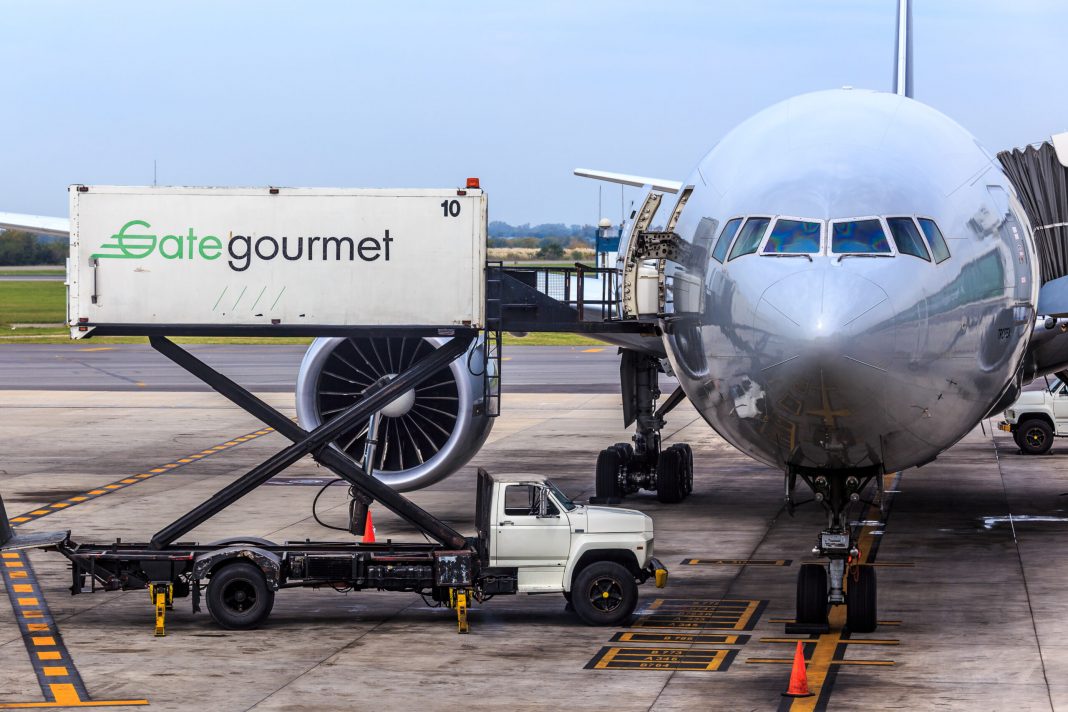Airline catering is a massive industry, providing over a billion meals to passengers every year. At this scale, airlines and caterers have the task and sourcing, preparing, and delivering hundreds of meals for every flight. Here’s the story of airline catering, all the way from the farm to your tray table!

Who decides the meal?
The decision of what you are served onboard lies with the airlines themselves. The process is a bit more complicated than planing a meal at home because of the impact flying has on taste buds and small. When at cruising altitude, our taste buds and smell function almost 30% less than usual, mainly impacting perceptions of sweetness and saltiness.
To combat this, catering companies prepare food that tends to be saltier or spicier in order to keep food tasting the same as on the ground. This can backfire at times too, with passengers frequently complaining of oversalted food.

Airlines also tie-up with celebrity chefs (from Gordon Ramsay to Neil Perry) to create special menus for those in business or first class, which focuses on food that tastes good while flying. The tricky nature of plane food makes it an important part of the flight experience for airlines. The rise of ultra-long-haul flights has also pushed airlines to innovate with food further in order to keep passengers awake at the right times.
Deciding what dishes to serve is a serious one for airlines, especially in premium cabins, and most have teams of chefs for this process. But what is the process of creating thousands of meals every day? Let’s find out.
Farming and sourcing
It’s important to note that most airlines don’t cater meals for their own flights outside their hub airports, instead relying on professional airline catering companies. This explains why the quality or meals might slightly change when taking connecting flights, since caterers change too.

The first step in creating an inflight meal is farming and sourcing the various components that go into a dish. The main target is to prepare food that is fresh and tasted good at 35,000 feet, which isn’t an easy feat. Since catering companies usually require large quantities of everything they produce, contracts are signed well in advance for all the needed items.

Depending on the meals being served onboard, catering companies will begin sourcing the various components. Most items can be bought in advance and stored in bulk, but fresh items such as vegetables, meats, and fruits must constantly be replenished. This means catering companies usually have complex supply chains to keep everything moving.
Production
With all the ingredients in place, caterers begin the process of producing dishes on an industrial scale. Dishes are individually made and then packed into the containers we see on the flight. These dishes are later put on a tray with the other components when ready for delivery to the aircraft.
However, for hygiene reasons, all the food much be blast chilled before being delivered, since hot food runs the risk of bacterial growth. Meals are then reheated onboard before reaching passengers.

Airline catering kitchens are generally located near airports for quick transportation and turnaround time. These kitchens are one of the many building near airport terminals and vary in size depending on the number of flights they serve. Nearly every major airport features multiple catering facilities for the various airlines flying out.
Hub airports for airlines usually feature sprawling facilities which create thousands of meals every day. For instance, Emirates has a 66,000 sqm facility near Dubai Airport which caters over 200,000 meals every day. Catering companies such as Gate Gourmet, DO&CO, and LSG Skychefs, all have kitchens near major airports to service airlines.
Delivery
The final step in the process is getting the food to the aircraft. This requires a degree of efficiency since the food must be temperature-controlled and aircraft generally have speedy turnaround times. Tight turnaround times, which can be as little as 50 minutes, means crews have to move quickly.

Catering companies having a fleet of cold trucks that transport food from the nearby kitchens to the aircraft. These trucks then rise on the tarmac to the height on the plane to deliver the food. These can usually be spotted during boarding, with crews moving large trolleys with food in them.
Once on the plane, the cabin crew begins heating food soon after take off. This usually involves placing the dishes in a convection oven that rapidly warms the food, placing them on a tray, and serving them from a trolley. Passengers in business class and first class may also have some of their meals freshly prepared on a stove and plated onto cutlery after heating.
Big industry
While airline catering may only seem like a small part of the travel experience, it’s actually a massive industry. According to Research and Markets, the industry is expected to grow to $23.9bn in the coming years, with an annual growth of 6%. With airlines offering more options to passengers, the industry has seen booming growth in the last few years.

However, as with the rest of the aviation industry, catering has been badly hit by the current downturn. With only a fraction of flights to cater meals for, these companies are trying hard to open new markets. Many have been selling their meals at stores or delivering, while other airlines start restaurants serving plane food.
Most passengers, especially in economy, have a love-it or hate-it relationship with airplane food. But it is good to know all the work that goes into preparing an airplane meal and how food is different when in the air.
What do you think about inflight meals? Do you love them or hate them? Tell us your thoughts and experiences in the comments below!
[ad_2]
Source link


